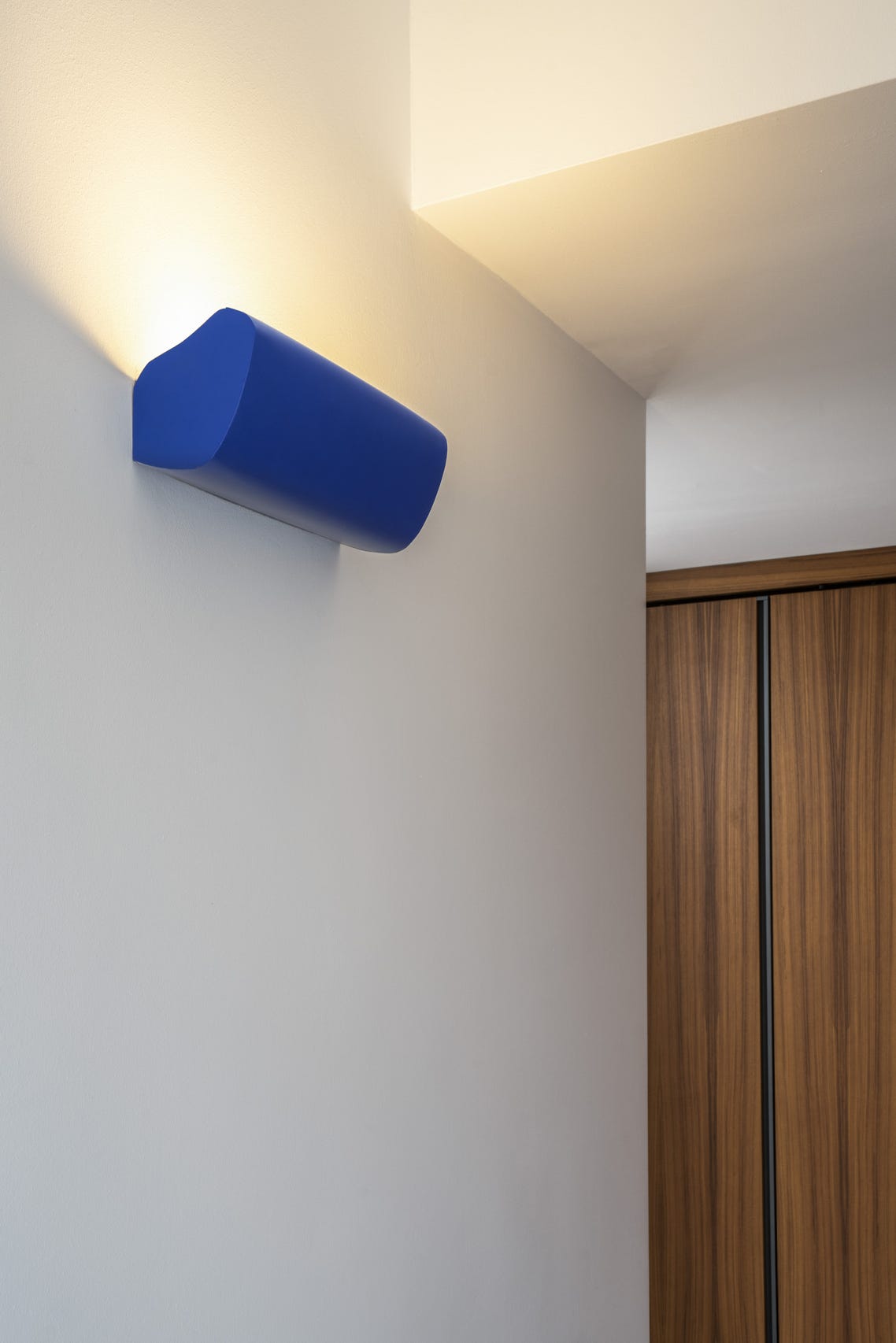
Le Corbusier designed the Applique Radieuse in 1949 to equip the entrance to the apartments of the famous Marseille Housing Unit, symbol of the Modern Movement in its architectural and urban design.
Composed of a colored curved sheet masking the light source, the Radiant Wall Lamp can be installed to light up or down, for direct or diffused light. The colors are the same as those adopted for the Housing Unit: the iconic red, blue, white, orange and green.
Dimensions 33,4 x 13,2 x 13,4 cm
Light source 2 x E27
Material metal
White
Red
Blue
Orange
Le Corbusier

Charles-Édouard Jeanneret-Gris, known as Le Corbusier, is a Swiss architect, urban planner, decorator, painter, sculptor, naturalized French author, born October 6, 1887 in La Chaux-de-Fonds in Switzerland and died August 27, 1965 in Roquebrune -Cap-Martin in France.
He is one of the main representatives of the modern movement with, among others, Ludwig Mies van der Rohe, Walter Gropius, Alvar Aalto, Theo van Doesburg and Robert Mallet-Stevens.
Le Corbusier also worked in town planning and design. He is known for being the inventor of the “housing unit”, a concept on which he began to work in the 1920s, an expression of theoretical reflection on collective housing.
Le Corbusier's architectural work comprising seventeen sites (including ten in France, the others being spread over three continents) was listed as a UNESCO World Heritage Site on July 17, 2016.
Le Corbusier's work and thought were particularly influential on post-war generations of architects and widely disseminated, before entering, with the period of postmodernism, a phase of significant and regular contestation.
He is the father of modern architecture, being the first to replace external load-bearing walls with reinforced concrete pillars placed inside buildings.
When Le Corbusier's death was announced, Alvar Aalto admitted that he had never appreciated the dogmatic prophet or the spokesman for modern architecture. Once the first surprise of the introductions, there was only a verbose flow. But the meticulous achievements of the architect builder deserved, according to the Finnish master, a completely different consideration, by their variety and their originality, their functionality and their adaptation to the constraint, their generous spirituality or their geometric destitution, their surprising evolution with the time…
Price Guarantee
Offering design at the right price is an integral part of our work. If you find the same item at a lower price at another retailer, delivery included, we will not only match it, but even offer you a better price.
How to take advantage of it?
We compare our prices every day with all authorized retailers in Europe. If nevertheless you find cheaper, contact us for a counter-proposal.
We must be able to verify that the item is authentic, new, perfectly identical (size, materials, color, etc.)
and that it is not part of a campaign or temporary destocking.
The valid basis is, for example, a current quote or a direct link to another retailer's website where the lower price is indicated. An email image is invalid, the original email must be forwarded.
The offer does not apply to orders already placed and cannot be combined with any of our other offers or promotions.